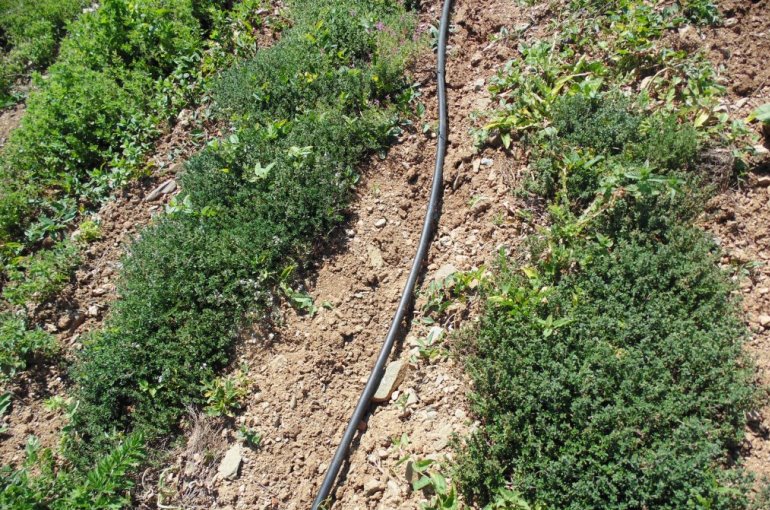Thyme Water Requirements

This post is also available in:
This post is also available in:
![]() Español (Spanish)
Español (Spanish) ![]() Français (French)
Français (French) ![]() Deutsch (German)
Deutsch (German) ![]() Nederlands (Dutch)
Nederlands (Dutch) ![]() العربية (Arabic)
العربية (Arabic) ![]() Türkçe (Turkish)
Türkçe (Turkish) ![]() 简体中文 (Chinese (Simplified))
简体中文 (Chinese (Simplified)) ![]() Русский (Russian)
Русский (Russian) ![]() Italiano (Italian)
Italiano (Italian) ![]() Ελληνικά (Greek)
Ελληνικά (Greek) ![]() Português (Portuguese (Brazil))
Português (Portuguese (Brazil))
Thyme Plant Irrigation
Thyme is a drought tolerant plant and can be grown without artificial water supply in some cases. However, when cultivated commercially, in areas with no rainfalls during the summer, at least two irrigation sessions are necessary in order to produce a medium yield. As it happens with many other herbs, thyme often suffers from root rots. It is more possible to lose our plants from a root rot than from a heavy frost. We shall be careful and not over irrigate, especially in soils with not so good drainage. Although overhead irrigation is used, drip irrigation is more common.
When we grow thyme for essential oil, constant experimentation and “trial and error” effort is necessary for the optimization of production. Timing and intervals of irrigation has been found to be critical for the quality of essential oil. Research results have shown that it is possible to increase the content of pharmacologically desirable compounds of Thymus vulgaris plant (thymol) by increasing the period between irrigation (from 3 to 10 days).
According to a recent research, it has been found that irrigating with secondary drainage water can increase the essential oil content of thyme in soils where the amount of available soil nutrients limits yield potential. Read more.
You can enrich this article by leaving a comment or photo of your thyme plants irrigations methods.
5.) Thyme Plants Propagation and Planting
6.) How to grow Thyme from Seed
7.) How to grow Thyme from Cuttings
8.) Thyme Water Requirements
9.) Thyme Fertilizer Requirements
12.) Thyme Essential Oil Yield
Do you have experience in Thyme cultivation? Please share your experience, methods and practices in the comments below. All the content you add will be soon reviewed by our agronomists. Once approved, it will be added to Wikifarmer.com and it will influence positively thousands of new and experienced farmers across the world.









































































